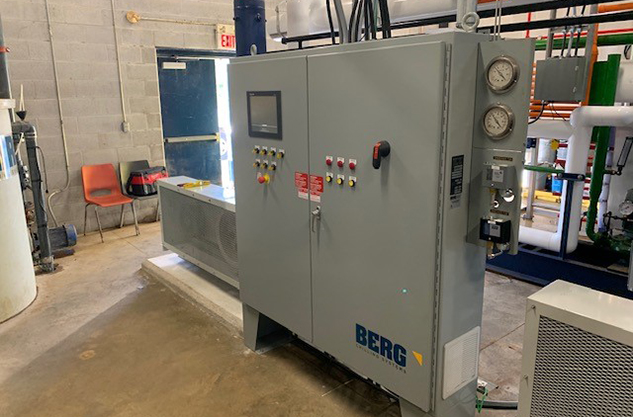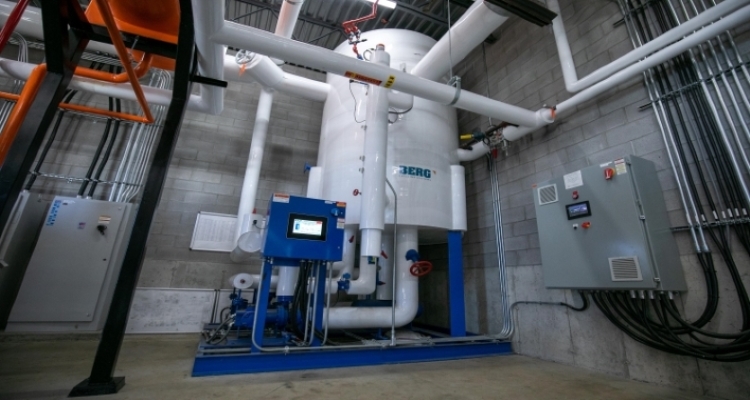In today's rapidly evolving industrial landscape, the only constant is change. Industries that rely on industrial chilling systems are no exception. The industrial chilling systems of the future need to be designed with flexibility in mind to respond to ever-evolving industry trends and requirements. As technology advances and market demands shift, it's imperative to ensure that your chilling facility is not just a solution for today but one that can adapt seamlessly to the requirements of tomorrow. This is where the concept of future-proofing comes into play.

Industrial chilling systems have come a long way from their humble beginnings. Originally designed for basic temperature control, they now play a pivotal role in industries ranging from food processing to pharmaceuticals and beyond. As technology advances and industries become more competitive, chilling systems are expected to do more than just cool or freeze; they must adapt and optimize in real-time. Companies have to be ready for the ever-changing business environment and prepare to respond to unexpected events.
As the world becomes more environmentally conscious, there's a shift towards the use of eco-friendly refrigerants with lower Global Warming Potential (GWP). Future-proof chilling facilities should be designed to accommodate these refrigerants, ensuring compliance with stringent environmental regulations.
Energy efficiency is a top priority. Manufacturers are under increasing pressure to reduce their carbon footprint. Chillers should be equipped with advanced controls and variable speed technology to optimize energy consumption. The ability to integrate with renewable energy sources should also be considered. Energy-efficient chilling systems are not only environmentally responsible but also cost-effective.

Automation has become a cornerstone of modern manufacturing. Chilling systems are no exception. The adoption of automation technologies and remote monitoring systems in chilling facilities allows for precise control, real-time adjustments, reduced human error, increased efficiency and predictive maintenance. It's not just about setting a temperature anymore; it's about having the system intelligently adjust itself based on data and real-world conditions.
For instance, automated chilling systems can monitor factors such as ambient temperature, product load, and energy costs to optimize cooling operations. They can adjust compressor speeds, fan speeds, and coolant flow rates to maintain precise temperatures while minimizing energy consumption. Such adaptability ensures that your chilling system is always operating at peak efficiency, saving you money and reducing environmental impact.
In today's data-driven world, decisions based on solid information are paramount. Industry 4.0 principles emphasize data collection and analysis in real-time. Chilling systems should be designed to collect and provide data for analytics, enabling proactive decision-making and operation optimization.
By integrating data analytics and machine learning, chilling system can anticipate maintenance needs, detect performance anomalies, and even suggest efficiency improvements. This proactive approach not only minimizes downtime but also extends the lifespan of the equipment.
When selecting an industrial cooling solution, it's advisable to opt for modular chilling systems that can be effortlessly expanded or reconfigured to accommodate evolving cooling requirements. This flexibility can reduce downtime during upgrades or changes in production and ensure that you can scale your chilling capacity as needed without major overhauls.
To ensure adaptability and compliance with changing regulations, it's important to confirm that your chilling system is designed to handle various refrigerants, including those with low Global Warming Potential (GWP). This allows you to adapt to changing regulatory requirements without a complete system replacement.
In pursuit of reduced downtime and enhanced operational efficiency, it's worth investing in advanced control systems that support automation and remote monitoring which allow real-time adjustments and predictive maintenance. These systems should be easily upgradeable to incorporate future technologies without a complete system overhaul.
For both cost savings and long-term energy efficiency improvements, it's essential to incorporate energy-efficient components and technologies into your chilling system, such as variable speed drives and heat recovery systems.
When designing chilling systems, it is important to incorporate the capability for seamless integration with data analytics platforms. This integration empowers you to harness the power of data-driven decision-making, optimizing performance, and accurately predicting maintenance needs. To achieve this, implement data analytics tools capable of processing data from the chilling system and other manufacturing processes, revealing valuable trends and areas for enhancement. Additionally, invest in sensors capable of measuring vital parameters such as temperature, humidity, and energy consumption, ensuring their seamless integration into your data collection system. To make the most of these insights, it's imperative to train your staff in interpreting and acting upon the data, as effective data-driven decision-making necessitates a skilled workforce proficient in leveraging these valuable insights.

Future-proofing your chilling facility is not just about adapting to current trends; it's about staying ahead in a rapidly changing landscape. By designing for flexibility, adaptability, integrating automation, and embracing data-driven decision-making, an industrial chilling system can be a strategic asset to meet evolving industry trends and requirements, ensuring long-term efficiency, sustainability, and competitiveness.
At Berg, we understand the importance of future-proofing. Berg industrial chilling systems are designed with flexibility and adaptability in mind, ensuring that our clients' cooling needs are met today and into the future. Closely collaborating with our experienced sales engineers, our clients can be confident that the final solution takes into account essential project factors. These may encompass design and functionality requirements, considerations for hazardous environments, spatial constraints, standby capabilities, expansion potential, maintenance needs, capital and operational expenditures, environmental considerations, and a host of other critical parameters.
Contact us today to learn more about how our solutions can help you stay ahead in the ever-changing industrial cooling landscape.